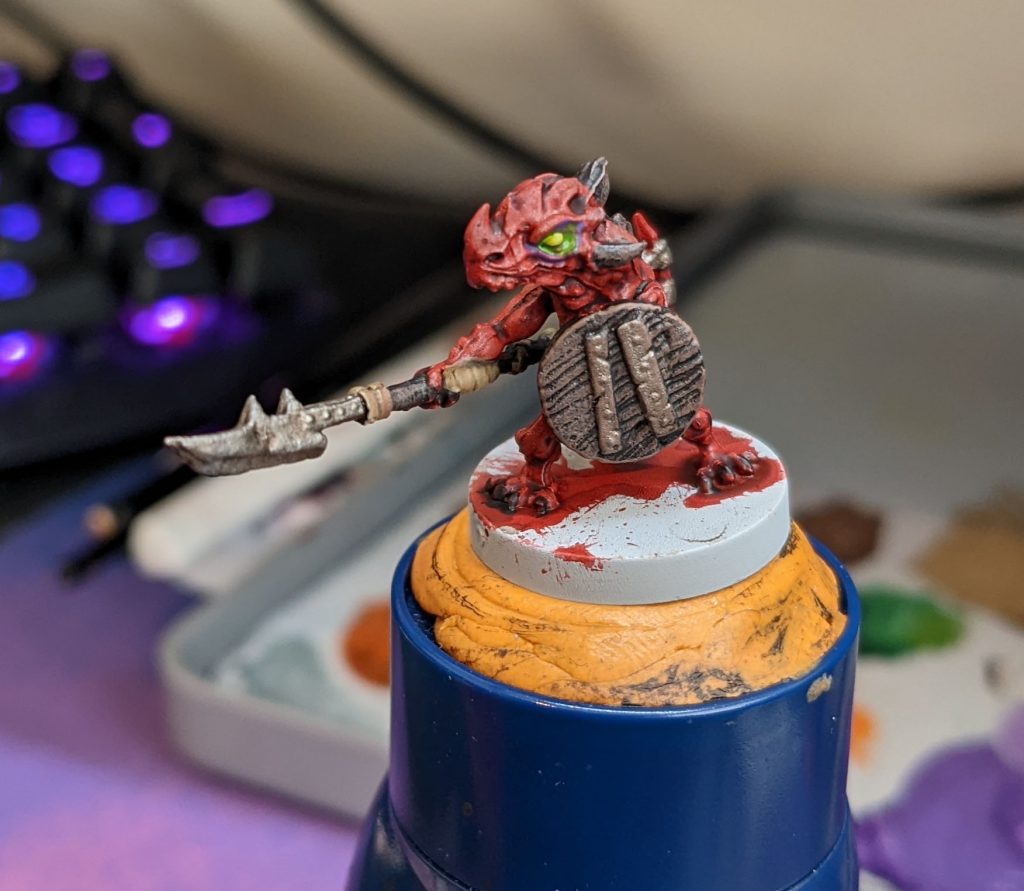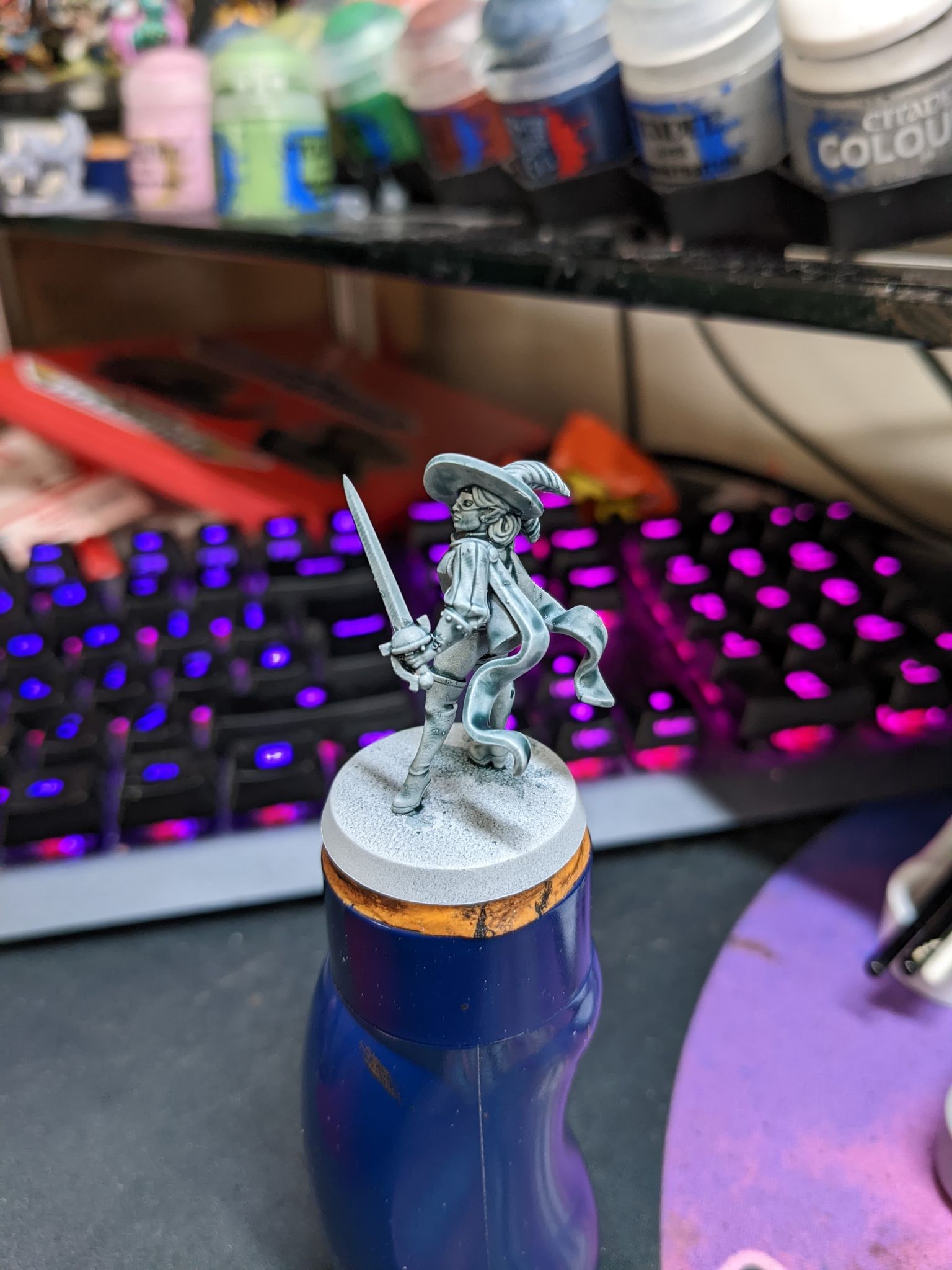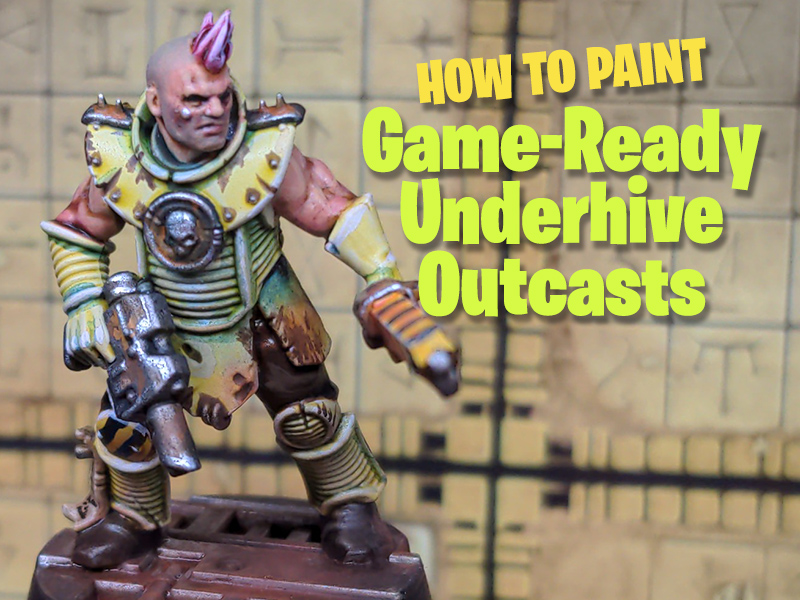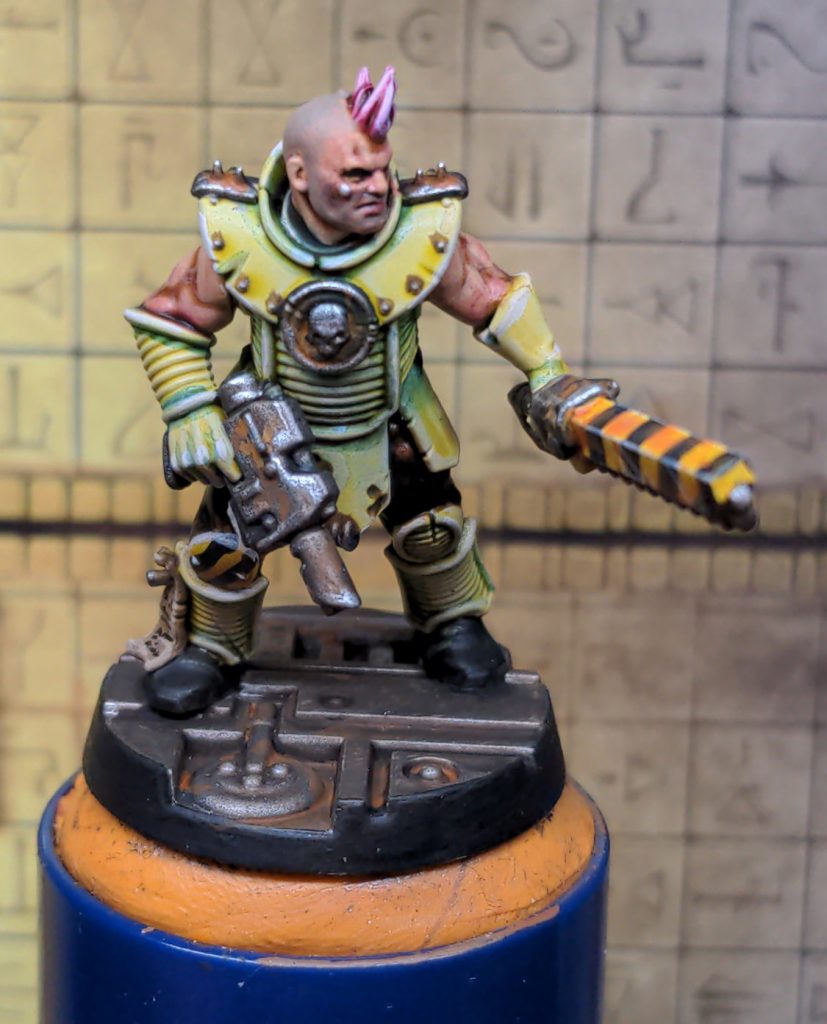The folks at Steamforged Games kindly sent me a bunch of their Epic Encounters D&D Supplements lately, and I am in love with the miniatures in these sets. Each set contains not only miniatures but a full encounter including double sided playmats and books containing enemy stats and attacks, story beats and more. Going forward I am hoping to bring more painting tutorials for these sets to help you get your models painted to a nice gaming level!
This Kobold is from the Shrine of the Kobold Queen set. In this tutorial I’ll show you how I painted my unit of 4 shield+spear loaded Kobolds to a playable tabletop standard.


I started with a spray of Grey Seer undercoat. This is a very light grey, which gives colours placed over it a slightly cooler tone which befits the scales of a reptilian kobold (although some Kobolds are mammalian, I think?)
Over this, I apply Citadel Contrast Blood Angels Red over all the Kobold scales and flesh. Don’t worry about splashing it onto other areas, since we’ll be using darker colours over most of the other areas.


Next I took Cygor Brown contrast paint, and applied it over horns, claws, the shield, and the staff shaft. I then used Leadbelcher over all the metal areas.


I used Zandri dust to pick out a few straps on the spear staff, then I applied Agrax Earthshade over everything so far, including the red areas to help deepen the shadows and tie the colours together.


The horns, shield, and staff got a quick drybrush with Gorthor Brown paint to bring out some of the woodgrain texture, I also gave the edge of a shield a highlight with the same colour. Then I painted a little purple into the eye area, which will help the bright green glowing eyes pop a little more.


The eyeball was painted first with Corax White paint, then given a plentiful coat of Tesseract Glow technical paint. I put on enough that it flowed into the sharp crevices of the eye and created a glowing effect.


I used Ushabti Bone and Zandri Dust to highlight the straps on the spear, as well as bring out a few extra highlights upon the shield. The silver areas recieved a highlight with Mythril Silver.


Evil Sunz Scarlet was then used on the red areas to highlight the more raised areas and brighten up the overall look of the scales and skin. I used Troll Slayer Orange next to create even smaller highlights.


Lastly, I used Cygor Brown contrast paint once more to paint in pupils into the eyes, although this is a matter of taste and you might prefer the plan glowing style eyes. To finish the model off, the base was painted completely with Abaddon Black. You could also use a texture paint or other basing materials to match your other models, but I do my miniatures for these sets with plain black.
And with that, the Kobold is ready to take on some brave adventurers and die for his queen. Here’s the completed group of 4 Fire Brand Kobolds…

I hope you enjoyed this little painting guide, and if you found it useful please let me know in the comments below. Thanks once again to Steamforged Games for hooking me up! Also let me know if you’ve got any of the Epic Encounters stuff yourself, have you played any of the scenarios yet with your friends?

























